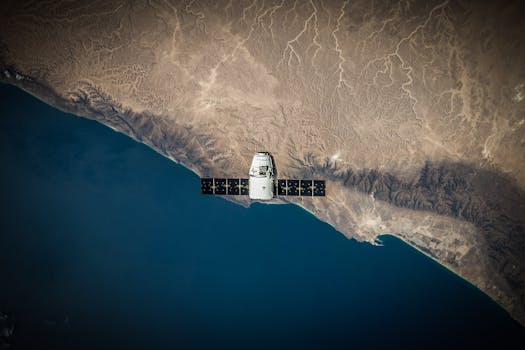The New Frontier: Exploring the Latest Trends in Satellite Communication
The satellite communication industry is undergoing a significant transformation, driven by technological advancements and increasing demand for global connectivity. This article explores the latest trends in satellite communication, including the rise of satellite constellations, the growth of satellite-based broadband services, and the development of new satellite technologies.

The New Frontier: Exploring the Latest Trends in Satellite Communication
Satellite communication is a vital component of modern telecommunications, enabling global connectivity and facilitating communication between people and organizations across the world. The Focus Keyword: Satellite Communication industry is undergoing a significant transformation, driven by technological advancements and increasing demand for global connectivity. In this article, we will explore the latest trends in satellite communication, including the rise of satellite constellations, the growth of satellite-based broadband services, and the development of new satellite technologies.
The satellite communication industry has experienced significant growth in recent years, driven by the increasing demand for global connectivity and the need for reliable and high-speed communication services. One of the key trends driving this growth is the rise of satellite constellations, which involve the deployment of multiple satellites in low Earth orbit (LEO) to provide global coverage and high-speed communication services. Companies such as SpaceX, OneWeb, and Amazon’s Kuiper Systems are leading the charge in this area, with plans to deploy thousands of satellites in the coming years.
Another trend driving the growth of the satellite communication industry is the increasing demand for satellite-based broadband services. Satellite broadband services provide high-speed internet access to remote and underserved communities, enabling them to access a range of online services and applications. Companies such as Hughes Network Systems and Viasat are leading the charge in this area, offering a range of satellite-based broadband services to consumers and businesses.
The Rise of Satellite Constellations

Satellite constellations are a key trend driving the growth of the satellite communication industry. These constellations involve the deployment of multiple satellites in LEO to provide global coverage and high-speed communication services. The benefits of satellite constellations include global coverage, high-speed communication services, and low latency. However, there are also challenges associated with satellite constellations, including the risk of satellite collisions and the need for regulatory frameworks to govern the deployment of these systems.
Companies such as SpaceX and OneWeb are leading the charge in this area, with plans to deploy thousands of satellites in the coming years. For example, SpaceX’s Starlink constellation plans to deploy up to 42,000 satellites in LEO, while OneWeb’s constellation plans to deploy up to 650 satellites. These constellations will provide high-speed communication services to consumers and businesses, enabling them to access a range of online services and applications.
The Growth of Satellite-Based Broadband Services

Satellite-based broadband services are another trend driving the growth of the satellite communication industry. These services provide high-speed internet access to remote and underserved communities, enabling them to access a range of online services and applications. Companies such as Hughes Network Systems and Viasat are leading the charge in this area, offering a range of satellite-based broadband services to consumers and businesses.
The benefits of satellite-based broadband services include high-speed internet access, global coverage, and low latency. However, there are also challenges associated with these services, including the high cost of deployment and the need for regulatory frameworks to govern the provision of these services. Despite these challenges, satellite-based broadband services are expected to play an increasingly important role in the provision of global connectivity, particularly in remote and underserved communities.
The Development of New Satellite Technologies

The development of new satellite technologies is another trend driving the growth of the satellite communication industry. Advances in areas such as satellite design, propulsion systems, and communication technologies are enabling the development of more efficient and effective satellite systems. For example, the development of electric propulsion systems is enabling satellites to operate for longer periods of time, while advances in communication technologies are enabling satellites to transmit data at higher speeds.
Companies such as NASA and the European Space Agency are leading the charge in this area, investing in the development of new satellite technologies and collaborating with industry partners to advance the state of the art. For example, NASA’s Artemis program is investing in the development of new satellite technologies to support the return of humans to the lunar surface by 2024. These technologies will enable the development of more efficient and effective satellite systems, supporting the growth of the satellite communication industry and enabling the provision of global connectivity.
See more:






